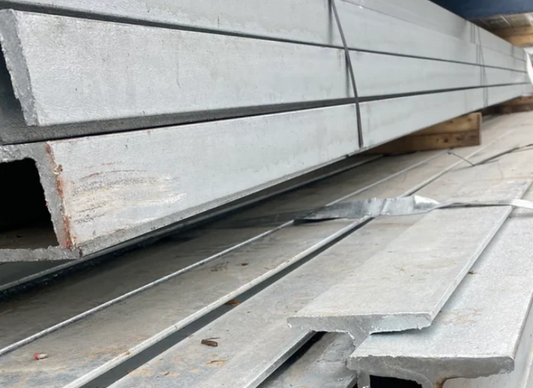A sagging fence can reduce the value of your house and represent a safety risk. Fortunately, in many cases, you may solve this problem without having to deal with the hassle and cost of totally rebuilding the fence.
Regular upkeep helps prevent a fence from leaning initially. After resolving the issue, it is crucial to consistently maintain it to prevent future recurrence.
6 simple steps for leaning fence without needing a complete replacement.
Step 1: Evaluate the Situation
Determine the source of the fence tilting in order to avoid it from occurring again. If you're not sure what went wrong, try consulting an experienced fencer who can identify the problem. Possible explanations for a fence tilting include:
- Posts becoming loose
- Wood rotting
- Metal posts bending
- Posts cracking
- Damage from insects
- Pressure exerted by branches or other structures against it.
A post that has just moved out of position may be readily reset. However, if the post is rotting, crooked, fractured, or insect-damaged, you may need to replace it.
Step 2: Move Any Debris
Clear the area around the leaning fence to provide a better view and easier access to the posts, panels, pickets, and rails that need attention. It may be necessary to tighten loose screws or address issues with the posts causing the tilt.
Look for any objects leaning on or pressing against the fence, such as decorations, branches, or tree roots—these could be contributing to the problem and should be removed if possible.
You might also have to remove parts of the fence in order to reach and adjust a post properly. For instance, pickets and panels could obstruct visibility of the post while rails can make it difficult to reposition it.
If dealing with wooden fences, use a screwdriver and pliers to extract screws and nails; for chain-link fences, remove retaining clips and post caps instead. Set aside undamaged pieces for reuse but take note of any components requiring replacement due to damage.
Step 3: Dig Around the Post
Now that you can quickly access the support posts, it's time to begin digging. Use a shovel, trowel, or demolition bar to uncover the subsurface portion of the post. Don't be concerned if one side of the fence has limited access; simply do your best. If you come across rotted wood or twisted metal, you will need to replace the fence posts.
Keep digging until you expose the concrete footing. If it's not there or damaged, that may be causing your leaning fence in the first instance.
Step 4: Straighten Out the Post
Once you are able to reposition the post, employ a level or plumb bob to align it vertically. Stabilize the post with two-by-fours after making necessary adjustments. If the post is connected to neighboring panels, the existing two-by-fours can also provide support for them.
Verify that your panels will remain straight in this alignment. This process confirms accurate adjustments and avoids repeating them once the concrete sets.
Step 5: Backfill the Hole
Now is a good time to secure the fence pole. Follow the instructions on the bag to pour and mix your quick-setting concrete in the hole. The concrete will take approximately an hour to dry, allowing you to reattach any removed fence parts after about six hours for added stability. Fill soil into the post hole or distribute any extra soil elsewhere in your yard.
Step 6: Reassemble the Fence
Once everything has dried and set, you can reattach the fence components if you had previously removed them using nails or screws. Be sure not to do this before the concrete has completely dried, as it could cause the fence to shift again. Use this opportunity to install new rails, panels, or pickets if the existing ones are in poor condition.
After completing your repair, make it a habit to regularly inspect your fence for any loose or damaged parts.
Conclusion
Repairing a leaning fence may be a satisfying and cost-effective endeavor. You may repair a straight and secure fence by following the procedures given in this article and selecting the way that best matches your scenario.
Remember that safety is paramount. If the fence is significantly leaning or you are worried about your abilities to repair it, don't hesitate to seek expert assistance.
With a little work, you can build a robust fence that can increase the value and curb appeal of your home for many years.




